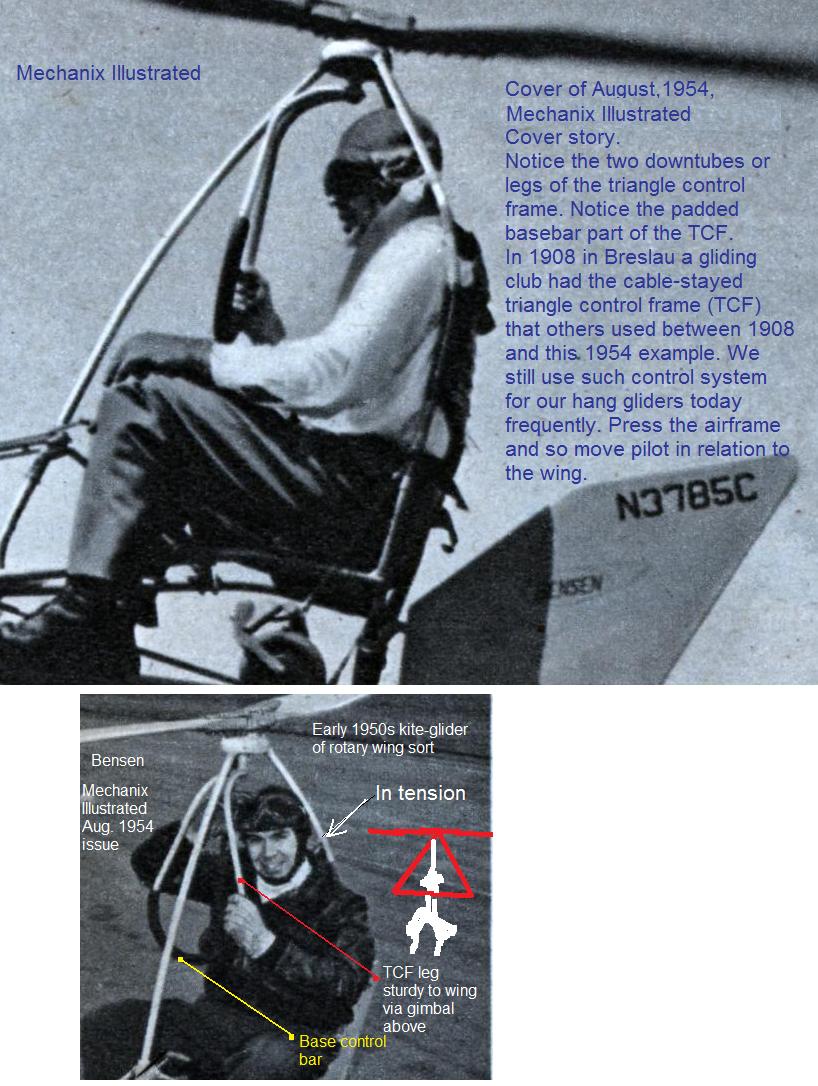in weight-shift-control aircraft (gliding or powered or power-off or kiting) (WSC, WSCA).



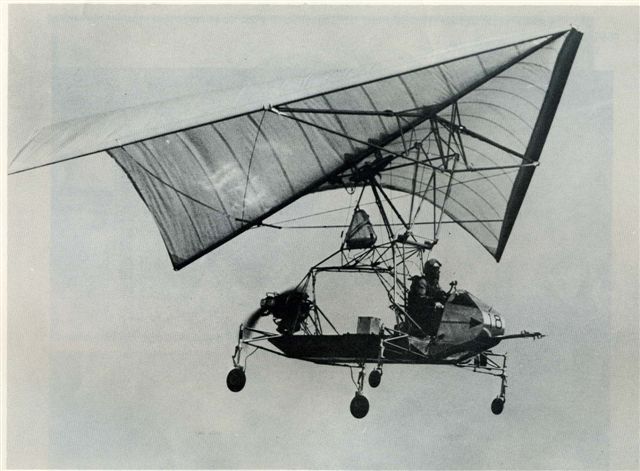
== Hang pilot body from shoulders when pilot is resting forearm on airframe.
== Hang pilot body from just a overhead grab of glider airframe.
== Hang pilot body from shoulders when pilot is hanging armpits on airframe.
== Hang pilot body from a fore-to-aft strap (two-point arch of strap); pilot sits on strap.
== For the John Worth hang gliders and powered flexible wings: Brace-hang payload mass between the front triangle control frame and a rear triangle control frame.
== NASA and Ryan hanging of payload via just lines.
== NASA and Ryan hanging with tension rigid members still universal-jointed at the airframe for WSCA.
== Hang pilot body from a short hang line; use a harness or seat at the terminus of the hang line. W. Simon in 1908 using the triangle control frame for hand-control of wing attitudes with WSC hung from airframe of foot-launch hang glider which featured a battened flexible wing; in later hang gliding renaissance, the same triangle control frame and hang-lined pilot would win high popularity in hang gliding and other WSCA.
== Alternative arrangements of the W. Simon basic one line is to have a group of many lines from the airframe to various points of a harness or seat; two lines, three lines, four lines, five lines, six lines, seven lines, eight lines, ...
Zee wrote:== Alternative to the flexible line that was extant in W. Simon's hang glider in 1908, is a stiffened line or even rod or tube still approximately universal jointed at the connection to the airframe. See sample hereon:
Early two stiffened beams or maybe ropes holding hung seat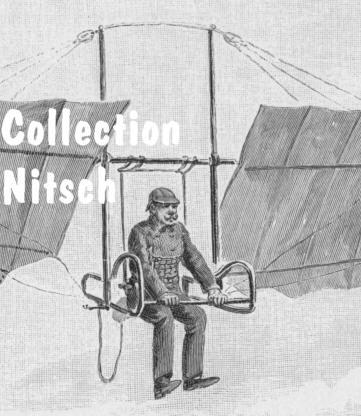
W. Simon in 1908 protected his arrangement by legal means. Mechanically this is about what is most seen today at hang glider sites.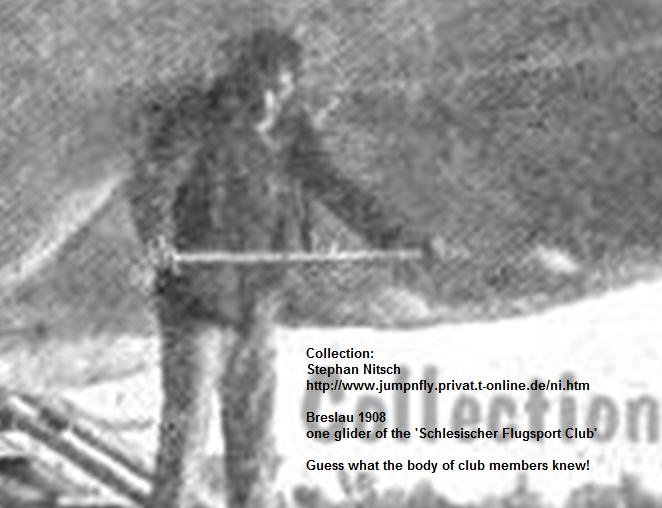
Eipper in Torrance using hang-from upper-under-arm; left corner of photo is Steve Wilson. Tail-keel hand launcher: ____________________ ?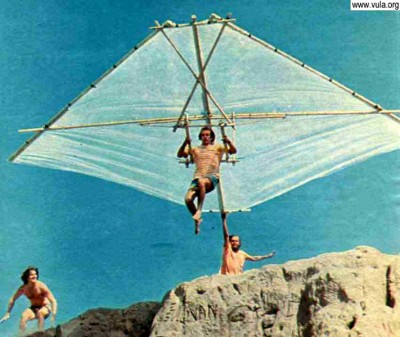
Other hang methods are invited to be described in this topic thread.
 Home
Home

